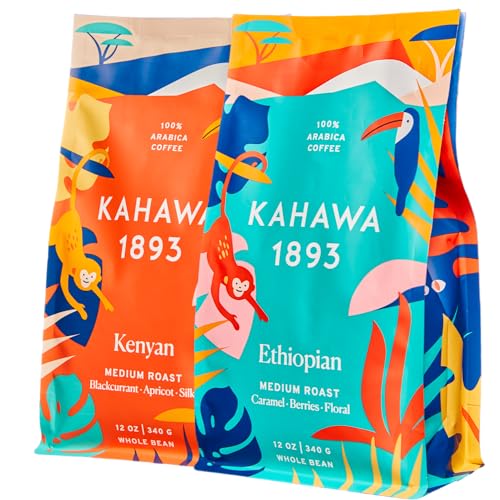Exploring the Rich Tapestry of Coffee: A Journey Through the Origins of Coffee Beans
Introduction:
Coffee, with its rich aroma and invigorating flavor, has woven itself into the fabric of cultures around the world. But behind every cup of coffee lies a fascinating story of origin – a tale of geography, climate, and tradition. Join us on a journey as we traverse the globe to unravel the diverse origins of coffee beans, from the misty highlands of Ethiopia to the lush plantations of Colombia and beyond.
Chapter 1: Ethiopia - The Birthplace of Coffee
Nestled in the rugged terrain of Eastern Africa, Ethiopia stands as the ancestral home of coffee. Legend has it that a young goatherd named Kaldi first discovered the stimulating properties of coffee when he noticed his goats frolicking with newfound energy after munching on the red berries of a certain shrub. Thus, the journey of coffee began in the fertile soils of Ethiopia's highlands, where coffee plants flourish amidst mist-covered mountains and verdant landscapes. Ethiopian coffee, characterized by its bright acidity, fruity undertones, and floral aromas, continues to captivate coffee connoisseurs worldwide.
Chapter 2: Yemen - The Gateway to Arabia
From Ethiopia, coffee spread to the neighboring lands of Yemen, where it took root in the terraced hillsides of the Arabian Peninsula. Known as the "Wine of Arabia," Yemeni coffee boasts a rich history dating back centuries, cultivated in the mountainous regions of Haraz and Matari. The unique microclimates of Yemen, coupled with traditional cultivation methods such as terracing and dry processing, yield coffee beans renowned for their intense, spicy flavors and earthy notes. Yemeni coffee remains a cherished treasure, prized for its rarity and distinctive taste.
Chapter 3: Arabia - The Cradle of Coffee Culture
From its origins in Ethiopia and Yemen, coffee found its way to the bustling markets and trade routes of the Arabian Peninsula, where it became an integral part of cultural and social life. In cities such as Mecca, Medina, and Cairo, coffee houses known as "qahveh khaneh" emerged as vibrant hubs of intellectual discourse, music, and camaraderie. The ritual of brewing and serving coffee became a cherished tradition, symbolizing hospitality and community. Arabica coffee, revered for its nuanced flavors and aromatic profile, remains synonymous with the rich coffee culture of the Middle East.
Chapter 4: Indonesia - The Spice Islands
Venturing further east, we arrive in the archipelago of Indonesia, home to some of the world's most renowned coffee-producing regions. From the volcanic slopes of Sumatra to the fertile lands of Java and Sulawesi, Indonesia boasts a diverse array of coffee varieties, each with its own distinct characteristics. Indonesian coffees, such as Sumatra Mandheling and Java Arabica, are prized for their full-bodied richness, earthy tones, and low acidity. The unique processing methods employed, including wet-hulling and sun-drying, impart a signature flavor profile that sets Indonesian coffee apart on the global stage.
Chapter 5: Central and South America - The Heartland of Coffee
As we journey across the Atlantic, we arrive in the verdant landscapes of Central and South America, where coffee cultivation thrives amidst lush rainforests and mountainous terrain. Countries such as Colombia, Brazil, Costa Rica, and Guatemala have emerged as global powerhouses in coffee production, each contributing distinctive flavors and profiles to the world of specialty coffee. Colombian coffee, with its smooth, balanced taste and medium acidity, remains a perennial favorite among coffee enthusiasts, while Brazilian coffee captivates with its nutty sweetness and chocolatey notes. From the volcanic soils of Guatemala to the high-altitude plantations of Costa Rica, the coffees of Central and South America embody the rich diversity of the New World.
Chapter 6: Africa - A Continent of Coffee Diversity
Africa, with its vast and varied landscapes, is home to a treasure trove of coffee-growing regions, each with its own unique terroir and flavor profile. From the lush forests of Kenya and Tanzania to the high plateaus of Rwanda and Burundi, African coffees dazzle with their vibrant acidity, fruity complexity, and floral aromas. Ethiopian coffee, revered as the birthplace of Arabica, continues to captivate with its diverse array of heirloom varieties, ranging from the floral and citrusy Yirgacheffe to the bold and earthy Sidamo. African coffees stand as a testament to the continent's rich coffee heritage and its ongoing contribution to the global coffee industry.
Conclusion:
As we conclude our journey through the origins of coffee beans, we are reminded of the remarkable diversity and richness of the world's coffee-growing regions. From the misty highlands of Ethiopia to the lush plantations of Colombia and beyond, coffee continues to captivate and inspire with its myriad flavors, aromas, and stories. So, the next time you savor a cup of coffee, take a moment to appreciate the journey it has traveled – from seed to sip – and the vibrant tapestry of cultures and landscapes that have shaped its path.




